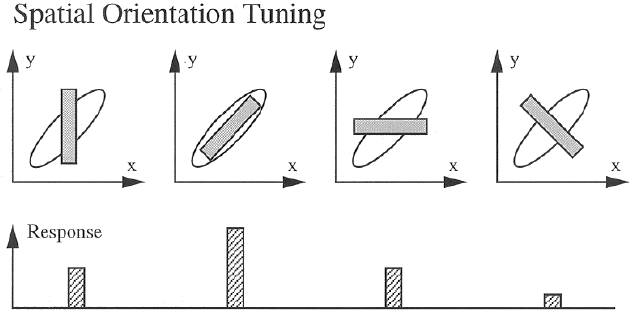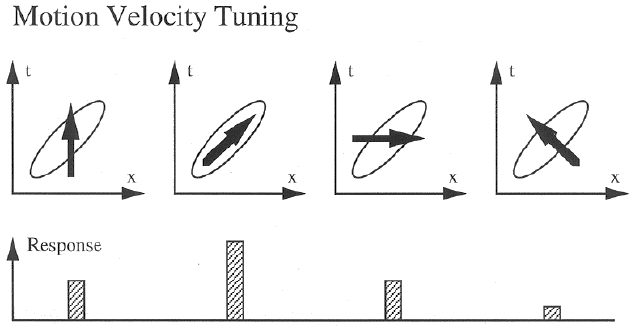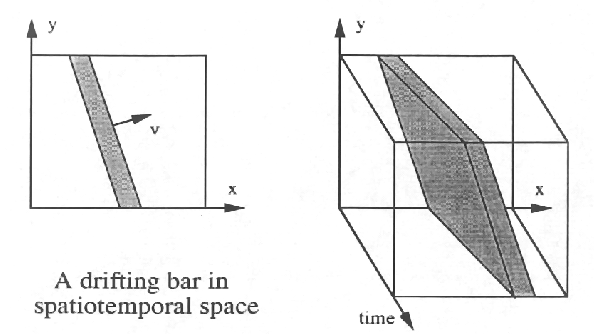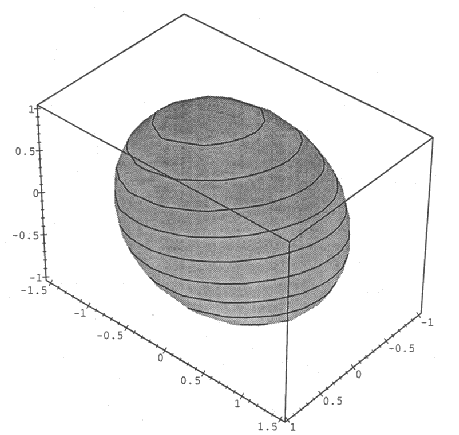
The response selectivities of the Gabor models can be easily obtained qualitatively as the 2D spatial orientation tuning and 2D spatiotemporal speed tuning shown below:


The 3D spatiotemporal tuning can be obtained similarly by comparing the representation of the 3D motion to the 3D Gabor model representing the spatiotemporal response of a V1 cell.
The 3D motion of a moving bar can be represented by this plot:

As can be seen, the 3D motion is represented by its velocity vector:

Also, as shown before, the response of a V1 cell can be modeled by this 3D Gabor filter:

which represents the cell's preferred motion direction, speed, as well as the orientation of the bar. Moreover, the relative response of this model to a 3D motion shown in the 3D plot above can be represented by how much the two 3D shapes in the two plots coincide with each other. And, while the 3D motion changes, the corresponding amount of coincidence between the two 3D plots will also change as a function of the motion's orientation, motion speed and direciton, and thereby the response tuning curve or surface can be obtained with respect to these motion parameters.
More quantitative analysis of the response tuning with respect to these motion parameters can be obtained in the frequency domain, as shown below: